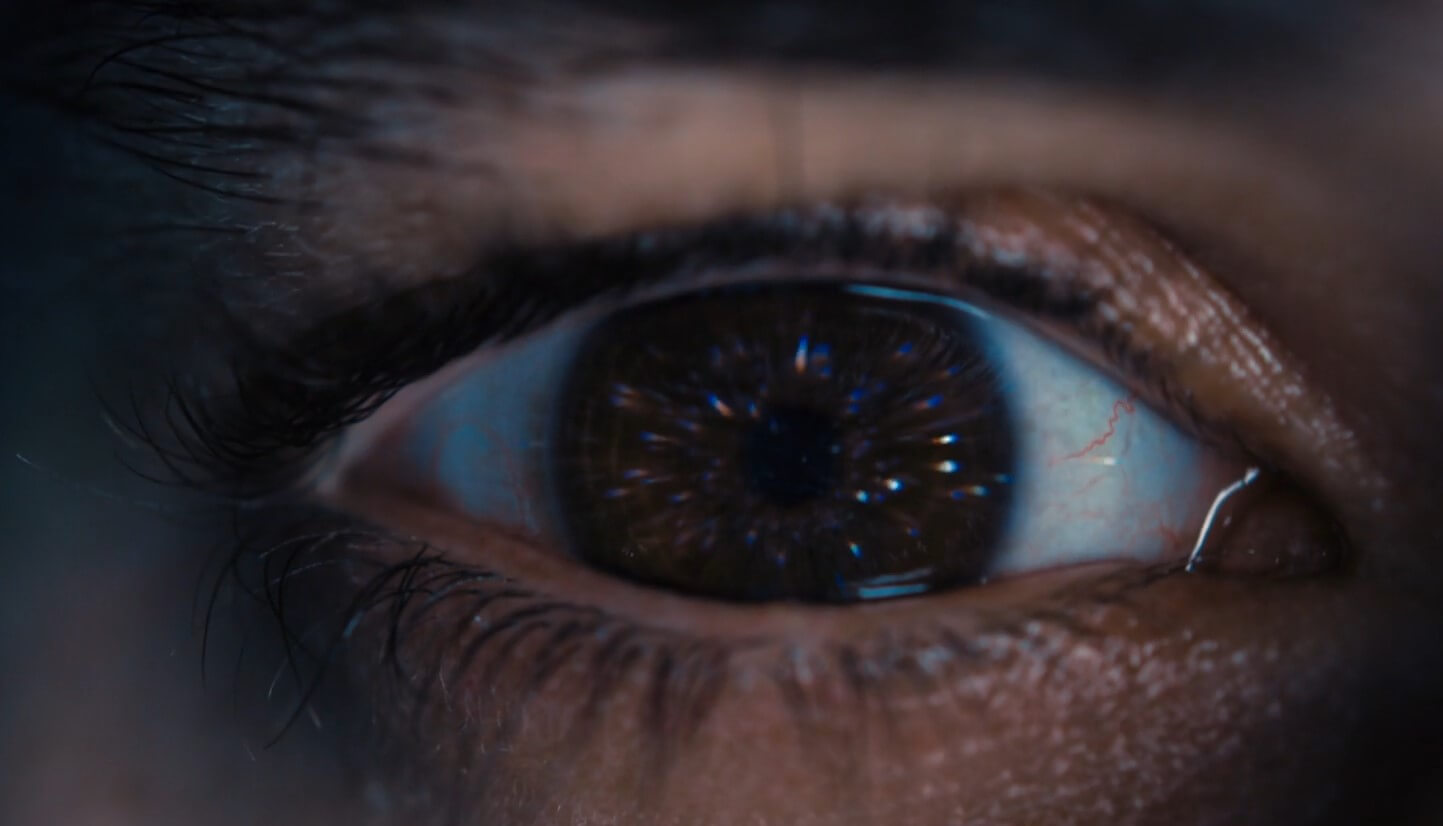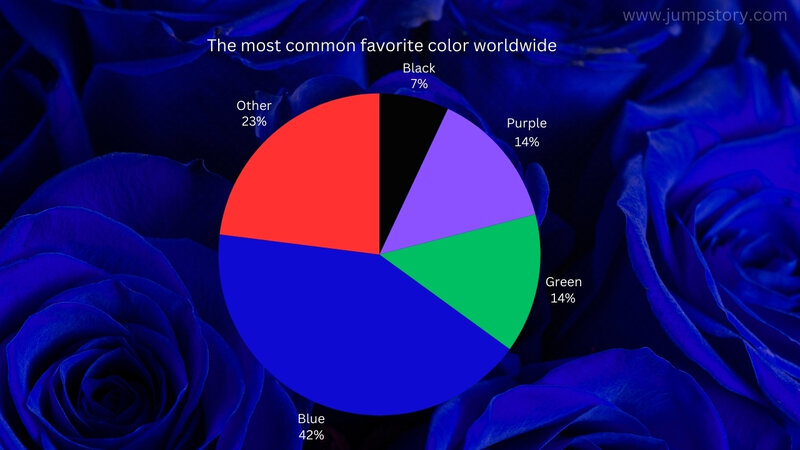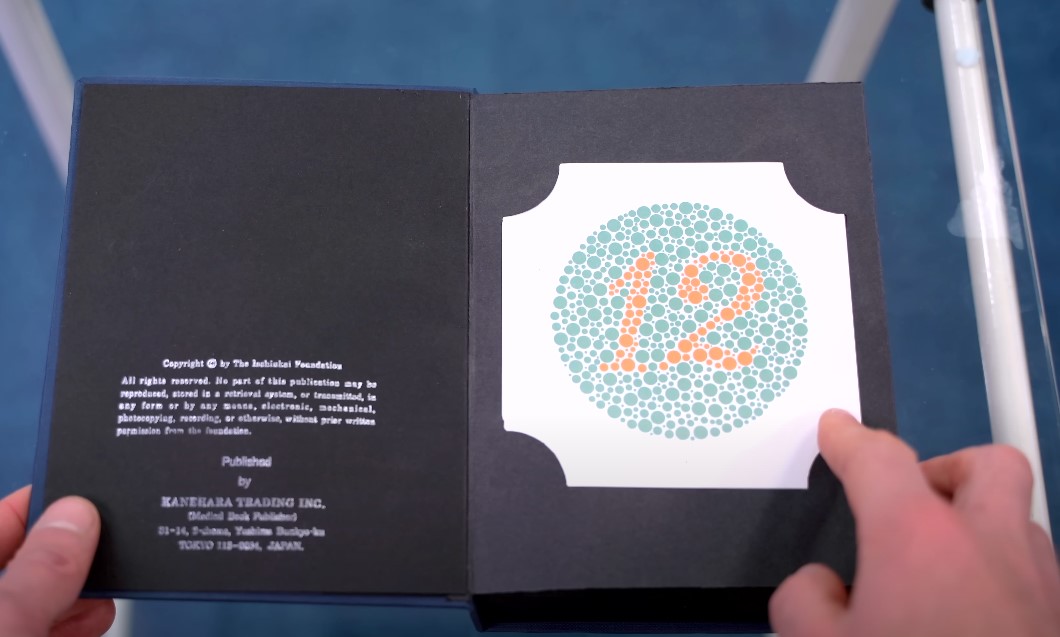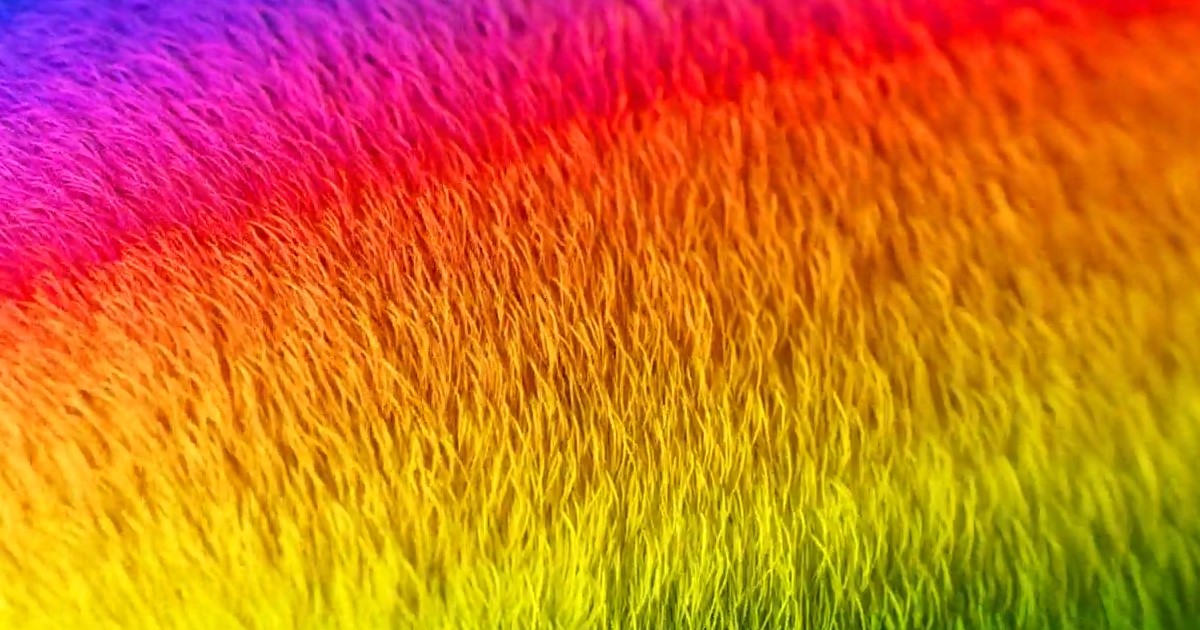Colors are an integral part of our daily lives, shaping how we perceive the world.
But did you know the way we see and interpret colors is influenced by a combination of biology, culture, and even personal emotions?
Let’s discuss the captivating world of colors, answering questions you may have never thought to ask.
How We Started Seeing Colors?

When humans enter the world, their initial perception of it is monochrome, limited to shades of black, white, and gray.
This early visual limitation is due to the underdeveloped state of an infant’s eyes and neural pathways. However, by the age of about five months, the ability to perceive a full range of colors develops.
Red, with its longer wavelength, is typically the first color a baby recognizes, as it is easier for developing eyes and receptors to process.
Why Red First?
Red’s longer wavelength is easier for an infant’s visual system to detect compared to shorter wavelengths like blue or violet. This early ability creates a foundation for later color recognition.
As their vision sharpens, infants begin connecting colors to the world around them. For example, parents might point to an apple and say, “red,” or to the sky and say, “blue.”
These early moments of learning tie colors to specific objects and experiences, shaping how individuals perceive and relate to color throughout their lives.
Color recognition milestones:
- At birth: Black, white, and gray are the only visible tones.
- Around 5 months: Full color perception begins.
- Early childhood: Associating colors with objects and meanings.
The way we are introduced to colors plays a significant role in shaping preferences. For example, many people identify blue as their favorite color later in life.
This is often linked to the consistent exposure to and positive associations with blue objects, such as the clear sky or the calming sea. Such associations reinforce our perception and emotional connection to specific colors.
Color preferences shaped by associations:
- Blue is often linked to calm, clear skies and expansive oceans.
- Positive memories connected to colors, like green fields or sunny yellow flowers, can influence preferences.
These early experiences with color demonstrate how integral they are to human development and the way we interpret the world around us.
Why Blue Is the World’s Favorite Color

Blue has achieved its global popularity for reasons deeply connected to how humans associate color with positivity. The sky and the sea are common elements of the natural world tied to feelings of calmness, clarity, and serenity.
These associations give blue an almost universally comforting quality. When people think of objects or experiences related to blue, most of them evoke peace, trust, or even inspiration.
On the contrary, negative associations with blue are rare, which adds to its preference. For example, it is difficult to identify universally disliked items that are predominantly blue. This lack of negativity cements its place as a favorite color for many.
Key reasons for blue’s popularity include:
- Association with nature: The calming vastness of the sea and the sky.
- Cultural interpretations: Blue often symbolizes trust and stability in various cultures.
- Positive emotional triggers: Linked to peace, relaxation, and introspection.
The Role of Light, Shadows, and Seasons in Color Perception

The colors we see are not fixed but highly influenced by external factors, including light and the changing seasons. When light hits an object, it absorbs certain wavelengths and reflects others. The reflected wavelengths determine the color we perceive. For example:
- A green object reflects green wavelengths while absorbing others.
- A black object absorbs almost all light, while a white object reflects nearly all.
Shadows and positioning also affect how we perceive color. An object in direct sunlight may appear vibrant, while the same object in shadow might seem muted or entirely different.
Seasons bring even more changes to how we interpret colors. Research suggests:
- Summer’s impact: Yellow can appear more greenish due to the abundance of greenery.
- Winter’s effect: Yellow may shift to reddish or grayish hues due to reduced greenery and changes in lighting.
These shifts occur because the human brain adapts to the environment, recalibrating how colors are processed. The constant interplay of light, shadow, and environmental changes shows how perception is dynamic and influenced by external conditions.
Colors and Emotions
The phrase “feeling blue” goes beyond being a simple metaphor. Emotions have a direct impact on how we perceive colors.
Research shows that emotional states influence the brain’s ability to process specific hues, particularly along the blue-yellow spectrum.
For example, when individuals experience sadness or have low dopamine levels, their ability to distinguish these colors diminishes.
On the other hand, positive emotions and higher dopamine levels can make colors appear more vivid, underscoring the significant connection between our mental state and visual perception.
Key points about emotions and color perception:
- Dopamine and the Blue-Yellow Axis: Dopamine, a neurotransmitter linked to motivation and pleasure, affects how accurately people perceive colors. Low dopamine levels can impair the ability to differentiate certain shades, while high levels enhance color recognition.
- Sadness and Visual Accuracy: Experiments have shown that individuals exposed to emotionally upsetting stimuli are less precise in identifying colors compared to those who experience uplifting or neutral stimuli.
- Humor’s Role: Positive emotions, such as those evoked by humor, sharpen visual processes, making colors appear more vibrant. Researchers suggest that emotional shifts directly influence how the brain processes visual information.
- Cultural and Emotional Phrases: Common expressions, like “seeing the world through rose-colored glasses,” point to the universal belief that emotions can alter perception—both metaphorically and literally.
How Cultures Interpret Colors Differently

Colors carry significant meaning across different societies, reflecting historical, social, and symbolic traditions.
While some colors evoke similar emotions globally, others take on vastly distinct meanings based on regional beliefs and practices. Here are a few examples:
- White: Widely recognized for purity, innocence, and cleanliness, white is prominently used in healthcare settings such as hospitals and clinics. In Western weddings, it symbolizes new beginnings, while in some Eastern cultures, white represents mourning and funerals.
- Red: A color often tied to strong emotions, red signifies passion and love in many Western societies. In contrast, it represents good fortune, celebration, and prosperity in countries like China. During Chinese New Year, red decorations are believed to bring luck and ward off evil spirits.
- Orange: Deeply symbolic in Hinduism, orange is considered sacred and associated with spirituality and renunciation. In the Netherlands, orange has a patriotic connection, representing the Dutch royal family, and it is often worn during national celebrations.
- Yellow: While yellow is often associated with optimism, happiness, and warmth in Western societies, its meaning varies globally. For instance, in Germany, yellow can symbolize envy, whereas in Egypt, it represents wealth and happiness. In some Eastern cultures, yellow signifies power and authority, often worn by royalty.
Cultural Influences on Color Perception
Cultural traditions, historical events, and religious practices shape the way colors are perceived and used. For example:
- Green: Seen as a symbol of nature and renewal in Western countries, green has a sacred connection in Islamic cultures, representing paradise and eternal life. It is often used in flags and religious contexts in many Islamic nations.
- Blue: Often linked to peace and trust in the West, blue is revered in Judaism as a holy color, symbolizing divine protection and spirituality. In some Asian cultures, blue can also signify mourning.
- Black: Associated with sophistication, formality, and power in Western fashion and branding, black takes on darker connotations in many cultures, representing mourning, death, or mystery.
When Colors Deceive Us?
Optical illusions provide fascinating examples of how the brain can misinterpret visual information, including colors.
A striking example involves black-and-white photos that appear colorful when overlaid with grids of colored dots.
The brain fills in the gaps, creating the illusion of color where none exists.
- Color Assimilation Grid Illusion: This occurs when small colored patterns cause the brain to “see” colors in areas that are actually black and white.
- Perception Compression: The brain simplifies visual information by focusing on patterns rather than details, leading to color illusions.
- Dynamic Illusions: Similar effects can occur in moving images or videos, where colors appear to shift or change due to overlays or patterns.
These phenomena highlight how our brains prioritize efficiency, often at the expense of accuracy in perceiving colors.
Color Blindness

Color blindness alters the way some individuals perceive colors. It is caused by variations in the light-sensitive cells in the retina, known as cones, which detect color.
Types of Color Blindness:
- Red-Green Color Blindness: The most common type, where distinguishing red and green is challenging.
- Blue-Yellow Color Blindness: A less frequent type, involving difficulty differentiating between blue and yellow.
- Achromatic Vision: A rare condition where vision is limited to shades of gray, affecting about 1 in 100,000 people.
Gender Disparity:
- Men are significantly more likely to have color blindness than women due to genetic factors linked to the X chromosome.
Unilateral Dichromacy:
- In rare cases, individuals may experience color blindness in only one eye, while the other functions normally.
Advancements in Addressing Color Blindness:
- Color-Enhancing Lenses: Glasses and contact lenses designed to enhance color perception offer improved experiences for those affected.
- Assistive Technology: Mobile apps and devices that label or distinguish colors help individuals navigate tasks that rely on color differentiation.
Color blindness showcases how variations in human biology affect daily experiences, and advancements in technology continue to make the world more accessible for those with this condition.
Mind-Blowing Facts About Colors
View this post on Instagram
The world of color is full of surprises that go far beyond what most people experience in their daily lives. From rare conditions to extraordinary visual capabilities, the science and history of color perception reveal some astonishing truths. Below are three fascinating aspects of how humans interact with and perceive colors.
Chromophobia
Chromophobia is a rare and often misunderstood condition where individuals experience intense fear or anxiety toward specific colors or colors in general. This fear is typically linked to traumatic experiences that associate a certain hue with a negative event.
Common Triggers:
- Red, possibly due to its association with blood or danger (Erythrophobia).
- White, linked to sterility or emptiness (Leukophobia).
Exposure therapy is the most common approach, gradually desensitizing individuals to their triggers. Therapy may also include cognitive behavioral strategies to reshape emotional responses.
Tetrachromacy

Most people have three color cones in their eyes, which enable them to see a wide range of colors. However, a small percentage of individuals, primarily women, possess a fourth cone, a condition known as tetrachromacy.
The extraordinary trait enables them to perceive an estimated 100 million colors, far surpassing the average human’s visual spectrum.
How It Works:
- The additional cone allows for greater differentiation between shades that others might perceive as identical.
- This condition arises due to genetic variations, often passed through the maternal line.
While tetrachromacy can provide an enhanced view of the world, it’s not always obvious to those who have it. These individuals might notice subtle differences in color that others cannot detect, such as variations in paint shades or fabric tones.
Dreaming in Black and White
Have you ever wondered why some people report dreaming in black and white while others dream in full color? Research suggests that this phenomenon is tied to generational exposure to media.
Individuals over the age of 55 are more likely to have grown up watching black-and-white television, which has significantly influenced their dream patterns.
Key Findings:
- Studies have shown that those raised with monochromatic media are more likely to dream without color.
- Younger generations, accustomed to color television and films, overwhelmingly report colorful dreams.
The Influence of Color in Marketing
Color psychology plays a pivotal role in marketing. Bright hues like red can grab attention, while blue instills trust and calmness. Understanding how colors evoke emotions allows businesses to create impactful visuals that resonate with their target audience.
Colors are more than just visual phenomena; they’re deeply intertwined with our biology, emotions, and cultural identities. By uncovering the science and stories behind them, we gain a deeper appreciation for the vibrant world around us.

